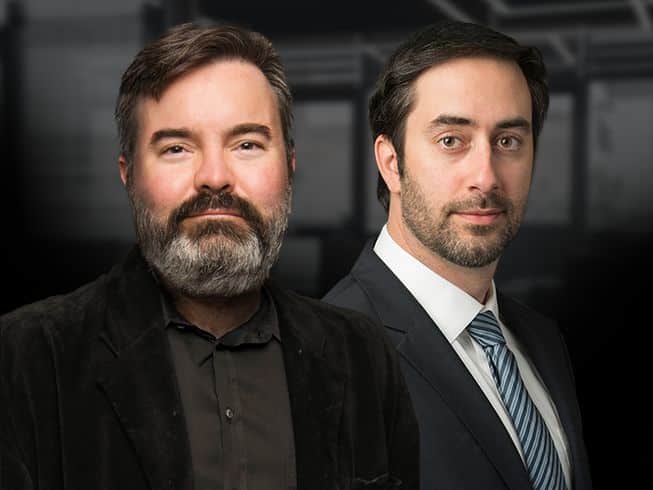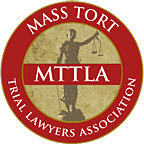Alternative Treatments
Over A Billion Recovered Nationwide
Alternative Therapies for Mental and Emotional Symptoms
Mesothelioma Can Cause Depression and Anxiety—But Researchers Are Finding Ways for You to Boost Your Mood.
In addition to physical symptoms like fatigue and loss of appetite, cancer patients also experience emotional symptoms like anxiety and depression. It’s easy to understand why this may happen when you receive a scary diagnosis and must undergo treatments that can be difficult and even painful.
While many treatment plans focus solely on addressing cancerous growths and their direct symptoms, mental wellness can be an important factor in the fight against mesothelioma. Here are a number of non-traditional methods researchers have found that may help alleviate your mental symptoms.
Acupuncture
Acupuncture, a practice where special needles are inserted into certain points in the body to help provide pain relief. It may also help activate the immune system, which could be especially helpful for patients trying some form of gene or immunotherapy. The practice has been found successful in alleviating nausea and vomiting caused by treatments like chemotherapy or radiation therapy. Additionally, acupuncture does not cause any side effects.
Aromatherapy
Essential oils (oils extracted from plants) can be used either burned or diffused, added to bathwater, or diluted and directly massaged onto skin. While studies have shown mixed results regarding the efficacy of essential oils, some patients may find they help improve mood, dampen nausea, and boost sleep.
Art Therapy
Creative projects can help patients express their feelings and thoughts about their cancer and treatment process. Skill is irrelevant—the process of creation is where the benefits of this therapy lie. Art therapy may be conducted in group sessions or one-on-one and can help decrease fatigue, depression, anxiety, pain, breathlessness, and nausea.
Biofeedback
Biofeedback involves teaching a patient methods to regulate their heart rate, blood pressure, and muscle tension as a way to control pain and other symptoms. Neurofeedback, a closely related field that involves controlling brain activity, may also help patients with fatigue, anxiety, and depression.
Chiropractic Treatment
Cancer patients with musculoskeletal pain often seek chiropractic care, which involves realigning the patient’s spine to alleviate discomfort and help increase mobility. While its benefits specifically to cancer patients are still unclear, many already seek this kind of care and believe it helps them feel better.
Cognitive Behavioral Therapy (CBT)
CBT is a common method used to treat patients with depression and anxiety. Practices associated with the treatment may also be able to help decrease fatigue, stress, and pain and improve quality of life among cancer patients. CBT techniques used for cancer patients may include cognitive restructuring, skills training, relaxation, visual imagery, and memory and attention adaptation training (MAAT).
Craniosacral Therapy
Stress can cause a person’s muscles to tense around the spinal cord, which could potentially affect the flow of cerebrospinal fluids and the function of the central nervous system. Craniosacral therapy aims to release this tension, so the brain and spinal cord are able to repair themselves. Patients may see a decrease in chronic pain. This therapy is still being tested in clinical trials. Patients should ask their doctor about contraindications before pursuing it.
Dance Therapy (Movement Therapy)
Like art therapy, dance therapy allows patients a form of non-verbal expression as an outlet to their emotions and stress. The types of movements used in dance therapy are also helpful to the circulatory, respiratory, and musculoskeletal systems. Patients may seek one-on-one treatment with a registered dance therapist or attend a group session. It should be noted dance therapy is a specific practice; not all types of dance will have the same effects.
Emotional Freedom Techniques (EFT)
EFT is like acupuncture without needles. Tapping the “energy meridians” used in acupuncture while repeating positive affirmations is said to help balance the mind and body, improving health. A study done on a general population (not composed of cancer patients) found EFT helped decrease pain as well as anxiety and depression.
Feng Shui
Feng Shui is a Chinese practice to help balance energies in your home. An expert can help you determine parts of your living space that are unbalanced and make suggestions to help you fix them. While this does not directly address pain or other side effects of cancer treatment, it can improve a patient’s quality of life.
Herbal & Nutritional Dietary Supplements
A patient’s overall health is important during cancer treatment, as many therapies are difficult on the body. If you are deficient in one or more vitamins or minerals, your treatment may be affected. On the other hand, some supplements can make a patient’s prognosis worse. You should always talk to your doctor before you begin taking any new supplements, whether dietary or herbal.
Homeopathy
Homeopathic treatments rely on the principle that a substance that causes harmful symptoms can, when diluted, help cure those symptoms when they manifest as a form of disease. While homeopathy may help improve a patient’s quality of life, the evidence is still sparse; doctors note it should never be used as an alternative treatment for cancer, but rather a complementary one.
Hypnotherapy
Commonly called hypnosis, this therapy puts a patient in a trance-like state the allows their doctor to guide them through the session. Hypnosis has been used as a pain-reduction method for cancer patients for nearly 200 years. The therapy can also help reduce emotional struggles, nausea, and fatigue. Though clinicians want more data and conclusive results on the practice, it has shown promise for patients with various types of cancer.
Integrative Manual Therapy (IMT)
After diagnosing possible areas of imbalance within the body, an IMT therapist uses specialized massage techniques to address problems with the body or mind. Though no studies have examined the effects of IMT on cancer patients, the practice has been found to reduce pain in patients with other medical concerns.
Light Therapy
Also called “bright light therapy,” this practice asks a patient to spend the first half-hour after they wake up in an area with bright white light. This therapy has been found to help with seasonal affective disorder, sleep disorders, and circadian rhythm disturbances. For cancer patients, it may help fight cancer-related fatigue (CRF) and reset sleep-wake cycles that have been disturbed by chemotherapy.
Lymphatic Drainage Therapy
Like craniosacral therapy, lymphatic drainage therapy focuses on fixing the flow of the body’s natural reparative systems. The lymphatic system is responsible for helping remove toxins and other built-up waste from the body. Lymphatic drainage theory suggests when the system is overwhelmed, the body may have a harder time staying healthy. Massage techniques are used to stimulate the lymphatic system.
Massage
While cancer patients are encouraged to find an oncology massage specialist if they want to pursue this treatment, studies have found it can help with pain, anxiety, fatigue, and nausea. Massage may also offer quality-of-life improvements to its patients. Similar to acupressure treatments, massage therapy may focus on certain parts of the body that are believed to correspond with internal organs.
Meditation
Meditation helps a cancer patient understand the connection between mind and body. At the same time, it may help them relax and even offer spiritual fulfillment. Because stress may increase the severity of the side effects mesothelioma patients experience, having a way to calm one’s body can make the treatment process easier. There are many different kinds of meditation a patient can try—the most popular are mindfulness meditation and Transcendental Meditation (TM).
Music Therapy
Music therapy can take many forms depending on a patient’s abilities, from singing to listening to music to composing a new piece. The treatment can help relieve stress, pain, anxiety, and depression in cancer patients.
Myofascial Therapy/Myofascial Release
By loosening the fascia, a layer of connective tissue in your body, myofascial therapy may help relieve pain or muscle tension. When this tissue contracts, it can cause pain in multiple areas of the body. A myofascial therapist will gently stretch the fascial tissue where they determine it is too tight.
Naturopathy
Naturopathy is built on the belief that nature has healing powers that patients can tap into. Practices range from dietary changes to massage and exercise therapy to homeopathic treatments. While naturopathy may promise wellness, you should always speak to your doctor before making major lifestyle changes such as these. They may interact with your other treatments or medications to cause serious illness.
Osteopathy/Osteopathic Manipulative Treatment (OMT)
Doctors who give osteopathy treatments look to the musculoskeletal system to determine the cause of pain in a patient. With knowledge of how interior systems are linked, a doctor can target certain joints or muscles and use techniques like similar to a massage. The treatment has been shown to reduce pain and may even stimulate healing.
Personal Fitness & Training
Especially because mesothelioma affects the lungs and heart, starting or continuing an intense workout regimen is not advised for patients. However, with a cancer exercise trainer, mesothelioma patients can continue to work on their physical health. Regular exercise can help improve a patient’s quality of life. However, you should always talk to your doctor before starting a new exercise practice.
Pet Therapy (Animal-Assisted Therapy)
Interacting with dogs and/or cats brought into a treatment facility can help with mental struggles like depression and anxiety and physical symptoms including high blood pressure. The pets are overseen by trained volunteers who can handle them and encourage interactions that will help the patient. Animal-assisted therapy may help with issues like loneliness, depressed mood, stress, and even muscle tone and motor skills.
Reflexology
A reflexology therapist will massage specific zones on the ears, hands, and feet which are believed to correspond to other organs on the body. Reflexology may help stimulate muscle contractions in the digestive tract. The practice may also help clear the lymphatic system and improve circulation. In cancer patients, reflexology can decrease the rate of nausea, vomiting, and fatigue.
Reiki
Reiki can take place either in person or by a distance session and is meant to pass healing energy from the practitioner to the patient. By touching certain parts of the body, the practitioner can, over the course of an hour, supposedly stimulate healing. While the evidence shows reiki is likely not effective for cancer patients, some may choose to pursue the practice to connect them with their spirituality.
Sound Therapy
Various low frequencies are related to healing and detoxification of the body. The vibrations of sound waves have been found to help with pain, blood circulation, blood pressure, and even mobility in patients with other disorders. Though the reason this treatment works is still unknown, scientists hypothesize certain frequencies may help synchronize brain waves, so a patient is in a trance-like state. Or, the vibration may mimic touch. Sound meditation is also popular, and like other forms of the practice, decreases stress, anxiety, depression, and fatigue.
Transcutaneous Electrical Nerve Stimulation (TENS)
TENS therapy delivers small electrical currents to the body via electrodes with the goal of creating a circuit parallel to the nerves that are in pain. The process can be self-administered, though a patient must be careful to place the electrodes in the correct position lest they make the pain worse. While TENS has been found to help reduce pain in cancer patients, further studies are needed to determine why it is effective and if there are potential drawbacks.
Thermography
Thermography is a form of screening that uses an infrared camera to show a heat map of the skin. If the body’s thermal output is asymmetrical, it may be a sign of an injury or undiscovered abnormality. Thermography has not been proven an effective alternative screening tool and should never be used in place of another imaging or diagnostic test.
Yoga
Yoga practice may help promote harmony between the body and mind, provide spiritual fulfillment, and help a patient relax. Yoga, by reducing stress, helps boost the immune system and could therefore help a patent fight against cancer. Additionally, it can help fight depression and anxiety. Further study is needed to determine whether the type of yoga practice matters to a patient’s health. As with other exercise programs, you should speak with your doctor before beginning a regular yoga practice.
We Take Our Clients’ Cases Personal
Helping Victims of Mesothelioma Is Why We Do What We Do
Your firm has made this stressful process easy and comfortable for me.
I couldn’t have done it without you.
The professionals at Shrader & Associates did the work, hassle free, and ensured I was able to leave a legacy for my family.
Your team stood by me throughout the entire process.
Thanks to you, the grief of my loss would have been almost unbearable otherwise.

The Right Team Makes a Difference
Mesothelioma cases require technical knowledge and an understanding of complex laws. An attorney with experience trying these claims and substantial resources to leverage on your behalf is your best bet to having a strong case. We are nationally recognized for providing quality representation to mesothelioma patients and their families.
Meet Our Attorney










![aaj-leaders-forum[2] Alternative Treatments](https://shraderlaw.com/wp-content/uploads/2022/04/aaj-leaders-forum2.png)


